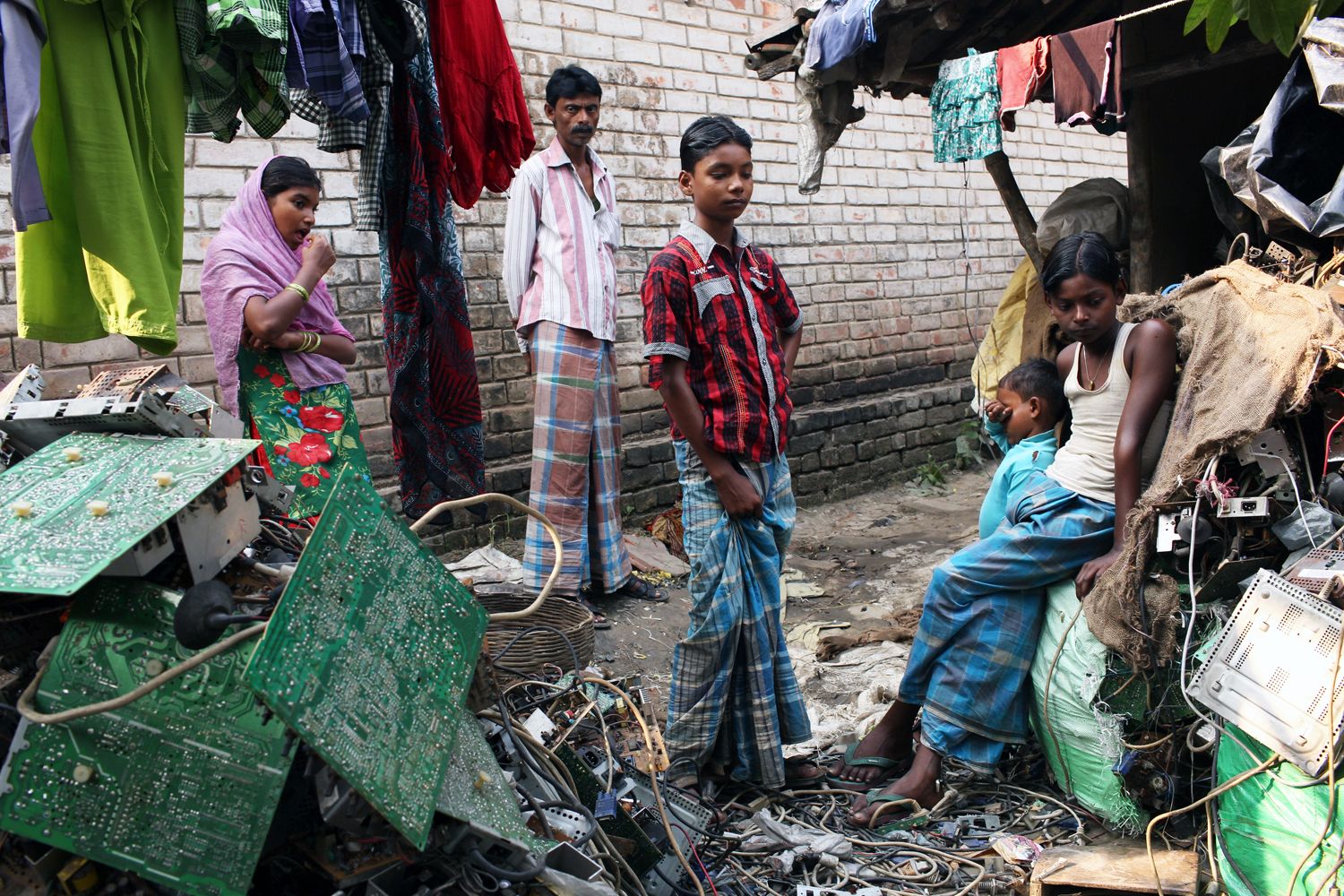This Earth Day, connect students to the latest stories from around world that highlight ways diverse communities are responding to their rapidly changing environments. If you are interested in connecting your class with a journalist who has covered environmental issues from around the world, email [email protected] to set up a Skype session!
1. Surprising Solutions to Air Pollution in China
Students analyze the causes and impacts of air pollution, and then explore diverse ways that China is responding to the growing threat by investigating two articles from National Geographic magazine.
2. Documenting Disasters: Hurricanes Maria and Harvey in the News [15 minutes]

Hurricane Harvey is expected to be the costliest natural disaster in U.S. history. Thousands of homes were flooded, many requiring major repairs. Here debris piles await removal from gutting two homes in Northwest Forest, a subdivisions of Beaumont. Image by Dan Grossman. United States, 2017.
Through discussion, writing and close analysis of photography, students evaluate media coverage of two hurricanes in order and debate the role that journalists should play in responding to natural disasters.
3. The Dangers of Being an Environmental Activist

A shrine to Berta Cáceres in La Esperanza. Image by Jeremy Relph. Honduras, 2017.
Students explore how journalist Fred Pearce unfolds the story of an environmental activist in Honduras in order to develop their own analyses of an environmental issue that is being debated in their own communities.
4. Leather and E-waste Pollution in India

A child walks past a pile of discarded computer monitors in the village of Sangrampur, south of Kolkata. The village's main activity is the breakdown and recycling of many different types of e-waste. Image by Sean Gallagher. India, 2013
Students work in groups to develop presentations that summarize and communicate how India’s leather industry and increasing electronic waste are contributing to pollution and major health concerns.
5. Climate Change and Culture

Solar farms are popping up in the Welsh countryside, although there is local concern about their visual impact. Image by Alex MacLean. Wales, 2015.
Students analyze and summarize four accounts of how climate change is affecting culture internationally in order to compare and contrast with how climate change is impacting their communities
6. Searching for Sacred Mountain: Religion and Environment in China

A man sits in this still from the film "Searching for Sacred Mountain" by Gary Marcuse. China, 2014.
Students analyze multiple articles and films to explore the interplay between China’s politics, environmentalism and Tibetan Buddhism.
7. Climate Change, Archeology and the Arctic:

Image by Eli Kintisch. Norway, 2015.
Students discuss the role of archeology and explore how climate change is affecting the work of archeologists in the arctic. They also analyze the tone of the article and the impact of how journalist Eli Kintisch has structured the details of the article.
8. Summarizing the Impact of Disappearing Groundwater in Four Countries

Image by Steve Elfers. United States, 2015.
Students discuss how they use water, predict the impacts of a reduced groundwater supply, investigate articles and video reporting about the impacts of vanishing groundwater around the world, and ultimately use summary to create advocacy campaigns in support of groundwater regulations.
9. Water Crises in China and Flint, MI

People swim by the Danjiangkou Dam in central China. Image by Sharron Lovell. China, 2015.
Students use digital resources from journalist-grantee Sharron Lovell to investigate the impacts of China’s Water Transfer Project on communities in northern and southern China. Students then practice cooperative learning and writing skills as they compare the impact of this project in China to how the discovery of lead in Flint’s water has impacted community members in Flint, Michigan.
10. The Effects of Ocean Acidification

Katharina Fabricius swims through carbon-dioxide bubbles off Papua New Guinea. The waters here offer a glimpse of how acidification is likely to transform the seas. Image by Steve Ringman. Papua New Guinea, 2013.
Students evaluate the advantages and disadvantages of using print and video to inform an audience in order to design a presentation that informs their community about ocean acidification.
For more lessons that use reporting on pressing environmental issues to teach text analysis, discussion, digital communication and writing, click here. To connect your class with a journalist who has reported on global environmental issues, email us at [email protected].
